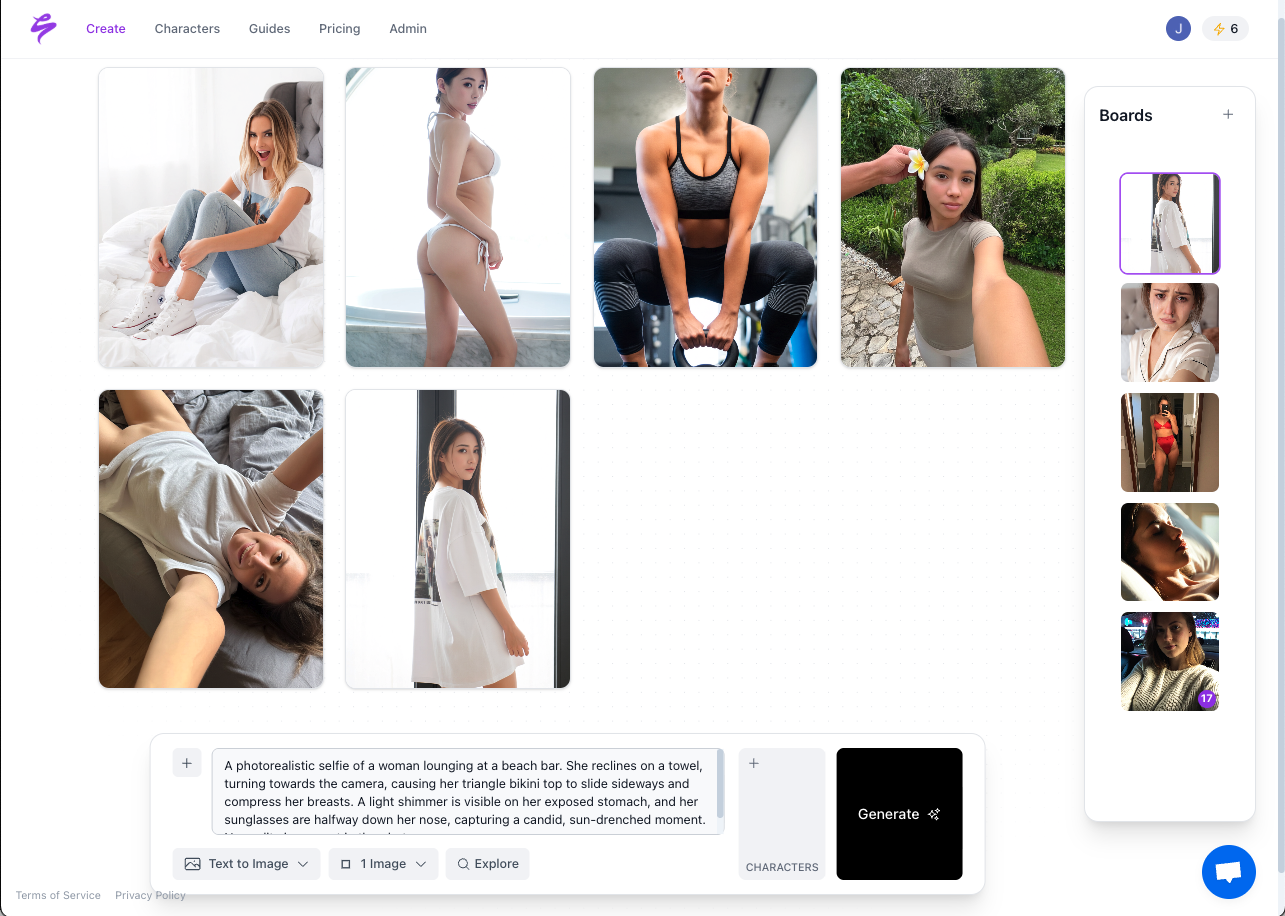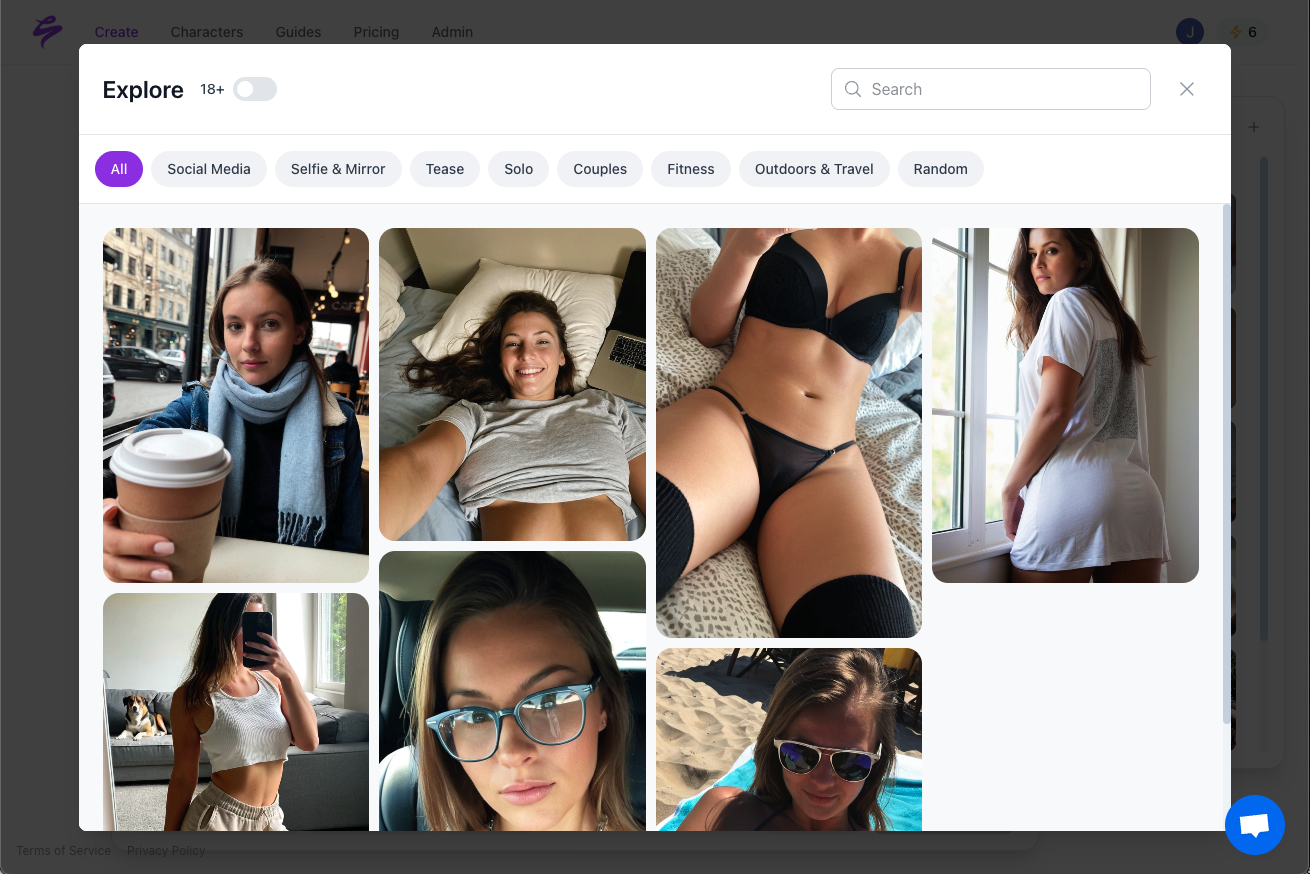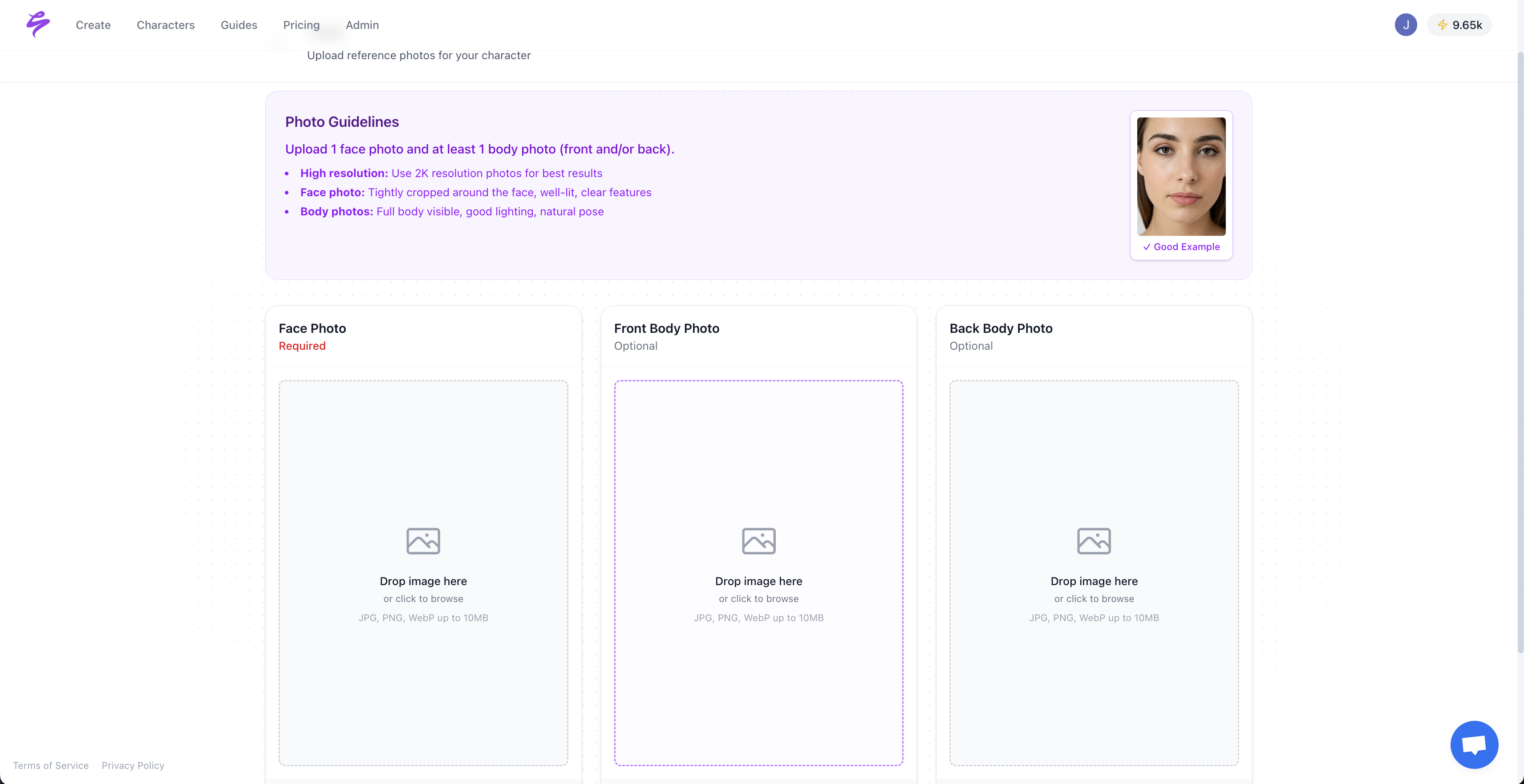Key Takeaways
- Virtual influencer teams face a content bottleneck because traditional production cannot keep up with demand for consistent, hyper-realistic posts across platforms.
- General-purpose AI tools often struggle with likeness, realism, and workflows, so they rarely meet the specific needs of virtual influencer content pipelines.
- Specialized AI image-to-video platforms such as Sozee help creators rebuild a virtual persona from a few photos and generate large volumes of on-brand photo and video content.
- AI-driven workflows lower production costs, support rapid experimentation, and unlock creative scenarios that would be difficult or expensive to shoot in real life.
- Well-structured AI pipelines support monetization, from sponsorships and social content to premium offerings, and keep virtual influencers relevant as platforms and trends change.
The Virtual Influencer Content Crisis: Why Traditional Methods Fall Short
Virtual influencer builders face intense pressure to deliver consistent, hyper-realistic content across thousands of posts. Traditional production cycles with shoots, sets, travel, and crews move slowly and cost a lot, so teams struggle to maintain frequency and quality.
The uncanny valley effect undermines this effort when visuals feel slightly off or inconsistent from one post to another. Audiences disengage when a virtual persona’s face, body language, or style shifts too much between pieces of content.
General AI tools offer basic image and video generation but rarely support the specific needs of virtual influencers. Many systems struggle to maintain likeness, fall short on hyper-realism needed for monetizable content, or lack workflows for style guides, approvals, and platform-specific output. AI image-to-video tools now fill this gap as a dedicated solution category for virtual influencer teams.
Scale Virtual Influencer Content With Sozee
Sozee helps virtual influencer teams turn static images into consistent, hyper-realistic video content at scale. The platform focuses on creator-economy workflows instead of general-purpose image or video generation.

Key features for virtual influencer builders include:
- Instant likeness reconstruction from minimal photos: Upload three reference photos to set a stable likeness for all future content.
- Unlimited, on-brand photo and video generation: Scale content output without the scheduling, location, or budget limits of traditional shoots.
- Hyper-realism optimized for monetizable pipelines: Create content that closely matches real-world shoots for sponsorships and paid content.
- Scalable output for daily posting across platforms: Support TikTok, Instagram, OnlyFans, Fansly, and other channels from the same core persona.
- Private, isolated models: Keep full control over your virtual influencer’s likeness, style, and brand integrity.
Start testing Sozee with your own virtual persona. Start creating now to build a repeatable content workflow.
5 Ways AI Image-to-Video Tools Improve Virtual Influencer Content Creation
1. Achieving Hyper-Realism and Consistency at Scale
Concept: Advanced AI image-to-video tools focus on reducing the uncanny valley effect by generating nuanced facial expressions, natural body language, and a consistent likeness across outputs. Deep learning algorithms deliver precise audio-to-facial-animation mapping with nuanced expressions, ensuring virtual personas connect authentically with audiences. This foundation helps virtual personas feel more lifelike in motion.
Significance: Reliable hyper-realism allows a virtual influencer to build trust without breaking audience immersion. Consistent facial structure, styling, and movement patterns support long-term engagement, stronger brand collaborations, and more stable monetization. Higher trust and engagement follow when audiences struggle to distinguish AI-generated content from real shoots.
Implementation: Teams can use platforms like Sozee that focus on high realism with minimal input, then standardize visual identity and personality traits through repeatable prompts and style bundles. Document your virtual influencer’s features and visual style guidelines to ensure consistency and brand alignment when scaling content output.

See how hyper-realism changes audience response. Get started today and test consistent content at scale.
2. Scaling Content Creation for Diverse Platforms at High Speed
Concept: AI image-to-video tools support rapid, high-volume content generation for different platforms and scenarios without complex production setups. Automation allows AI-generated avatars to seamlessly scale content creation, delivering consistent look, tone, and personal brand across diverse social media platforms and video aesthetics. This automation helps teams match each platform’s norms while keeping the persona stable.
Significance: A structured AI workflow solves the content bottleneck by supporting daily or even multiple daily posts across channels. Virtual influencers can keep up with trends, test new formats quickly, and maintain a visible presence without burning out human teams or budgets.
Implementation: Choose AI tools that can produce multiple variations from a single likeness while optimizing for platform formats and metrics. A single shoot-free workflow can feed:
- TikTok short-form videos and trends
- Instagram Reels, Stories, carousels, and feed posts
- Premium content formats for platforms such as OnlyFans or Fansly

Well-organized prompt libraries and reusable scenes help teams build content banks that can be scheduled and repurposed across platforms.
3. Dynamic Storytelling with Advanced Expression and Lip-Sync
Concept: AI image-to-video tools enable dynamic video content through precise lip-syncing, natural body language, and expressive facial animation. Recent advances in generative AI enable avatars with distinct gestures, lip synchronization, and emotionally nuanced interactivity that support new forms of narrative and creativity. Integration with text-to-speech and voice cloning keeps the persona’s voice consistent across content types.
Significance: These capabilities move virtual influencers beyond static imagery into ongoing narrative and conversation. Enhanced authenticity and audience resonance emerge from avatars that enable new forms of brand engagement and storytelling, which can deepen follower relationships and increase watch time.
Implementation: Look for AI solutions that include detailed animation controls, such as gesture styles, emotion intensity, and camera framing. Modern text-to-speech models and voice cloning let creators assign signature voices to virtual influencers, contributing to personality retention and cross-platform authenticity. This combination allows scripts, replies, and promos to feel like they come from the same consistent character.
4. Cost-Effective Production and Expanded Creative Options
Concept: AI tools reduce or remove many costs that usually come with content production, including locations, sets, travel, physical props, and repeated video shoots. The same tools also open space for imaginative concepts that might be too risky, complex, or expensive to film in reality.
Significance: Lower production costs allow creators to test more ideas, serve niche audience requests, and iterate on winning concepts without heavy upfront investment. Teams can build full “worlds” for virtual influencers, including fantasy locations, seasonal themes, and crossovers with other digital assets.
Implementation: Use Sozee to generate scenes and outfits that would otherwise require new shoots or hard-to-access locations. This can include:
- Frequent wardrobe changes without styling or shopping
- Diverse props and set designs created from text prompts
- Fantasy or sci-fi environments that would be impractical in real life
Each new idea can move from prompt to test content within minutes while still matching the existing brand style.
5. Building Monetizable and Future-Ready Content Pipelines
Concept: AI image-to-video tools help teams build structured content pipelines that support sponsorships, subscription products, and other revenue streams. Teams can efficiently generate content across diverse scenarios by separating visual assets and adapting them using AI, streamlining production while maintaining consistent virtual identity. The same workflows can handle both SFW social output and premium NSFW or gated offerings.
Significance: A predictable pipeline of on-brand visuals supports long-term monetization and partnership planning. This approach allows for adaptive content generation based on audience interaction, supporting effective content scaling while maintaining authenticity. Virtual influencers become durable digital assets rather than one-off experiments.
Implementation: Integrate AI platforms designed with monetization in mind, such as Sozee. Helpful capabilities include:
- Repeatable style bundles for specific series or campaigns
- Prompt libraries for high-performing scenarios and poses
- Output presets tailored to social feeds, ads, and premium content platforms
These elements support funnels that move audiences from organic social content to paid experiences and products.
Sozee vs. General AI Tools: Why Specialization Helps Virtual Influencers
General AI tools offer basic generative features, but specialized platforms such as Sozee align more closely with virtual influencer requirements. The comparison below highlights key differences.

|
Feature |
Sozee (Specialized AI) |
General AI Tools |
|
Likeness Reconstruction |
Hyper-realistic from 3 photos |
Often requires more training data, with inconsistent likeness |
|
Content Output |
Unlimited on-brand photos and videos |
Typically focused on static images with less control over series |
|
Realism and Consistency |
Optimized to avoid uncanny valley and keep style stable |
Frequently struggles with face consistency and realism over time |
|
Monetization Workflows |
Built with SFW and NSFW pipelines and approvals in mind |
Rarely includes monetization-focused workflows |
This comparison shows that general AI tools can assist with experimentation, while specialized platforms such as Sozee better support ongoing, revenue-focused virtual influencer operations. Each feature is designed to match how builders plan, approve, and distribute content.
Explore how specialized tooling changes your process. Sign up for Sozee to test it with your own virtual persona.
Frequently Asked Questions about AI Image-to-Video for Virtual Influencers
How do AI image-to-video tools maintain a virtual influencer’s consistent personality and look across different content?
AI image-to-video tools such as Sozee maintain consistency by rebuilding a high-fidelity likeness from a small set of base images. This digital twin becomes the foundation for all new content. Advanced models then apply the same facial features, proportions, expressions, and body language patterns across scenarios, guided by style guides and prompts. Private, isolated models further protect the brand so the same persona appears consistently across thousands of outputs.
Can these AI tools generate content that genuinely resonates emotionally with an audience?
Modern AI image-to-video systems can convey convincing emotional nuance through facial expression modeling, accurate lip-sync, and controlled gestures. Audio or text input maps to specific facial movements, eye behavior, and body language, which helps scenes feel more expressive and less mechanical. As a result, virtual influencers can deliver reactions, stories, and messages that feel more human and support real engagement and monetization efforts.
What kind of content output can I expect from AI image-to-video tools for my virtual influencer?
AI image-to-video tools can produce a wide range of content, including short-form clips for TikTok and Instagram Reels, longer narrative videos, promotional pieces, and content tailored for subscription platforms. The same virtual persona can appear in different environments, outfits, and scenarios while speaking with a consistent voice and visual style. Output can span from SFW teasers and brand collaborations to premium NSFW content, with each piece optimized for the target platform.
How do AI image-to-video tools handle different platform requirements and formats?
Specialized AI tools can generate content in aspect ratios, resolutions, and durations that match specific platforms. TikTok vertical video, Instagram square posts, Reels, and YouTube horizontal formats each have different needs, and these tools can adjust automatically or through presets. Many workflows also account for engagement patterns, such as hooks and pacing, while keeping the same persona style across every channel.
What level of control do creators have over their virtual influencer’s generated content?
Advanced platforms provide granular control over poses, expressions, camera framing, environments, clothing, lighting, and styling details such as hair and makeup. Sozee, for example, offers prompt libraries, style bundles, and approval flows so teams can scale production while reviewing key outputs. This balance allows broad creative exploration alongside strict brand oversight, ensuring every published asset matches the virtual influencer’s defined persona.
Conclusion: Put AI Image-to-Video to Work for Your Virtual Influencer
The virtual influencer content bottleneck has a practical path forward. Traditional production methods often move too slowly and cost too much, and general AI tools rarely deliver the likeness control and workflows needed for monetization. Specialized AI image-to-video platforms such as Sozee address these gaps by focusing on realism, consistency, and scale.
Sozee gives builders fine control over likeness, supports large volumes of on-brand content, and helps teams adapt output for different platforms and revenue models. The platform turns virtual influencer content creation into a repeatable, testable process instead of a series of one-off shoots.
Creators who adopt these tools can publish more frequently, respond faster to trends, and maintain a coherent brand experience across every channel. Virtual influencers built on specialized AI foundations are better positioned to hold attention and generate long-term value.

Ready to build, scale, and monetize a hyper-realistic virtual influencer with a structured workflow? Start creating now and set up your AI-native content pipeline.
